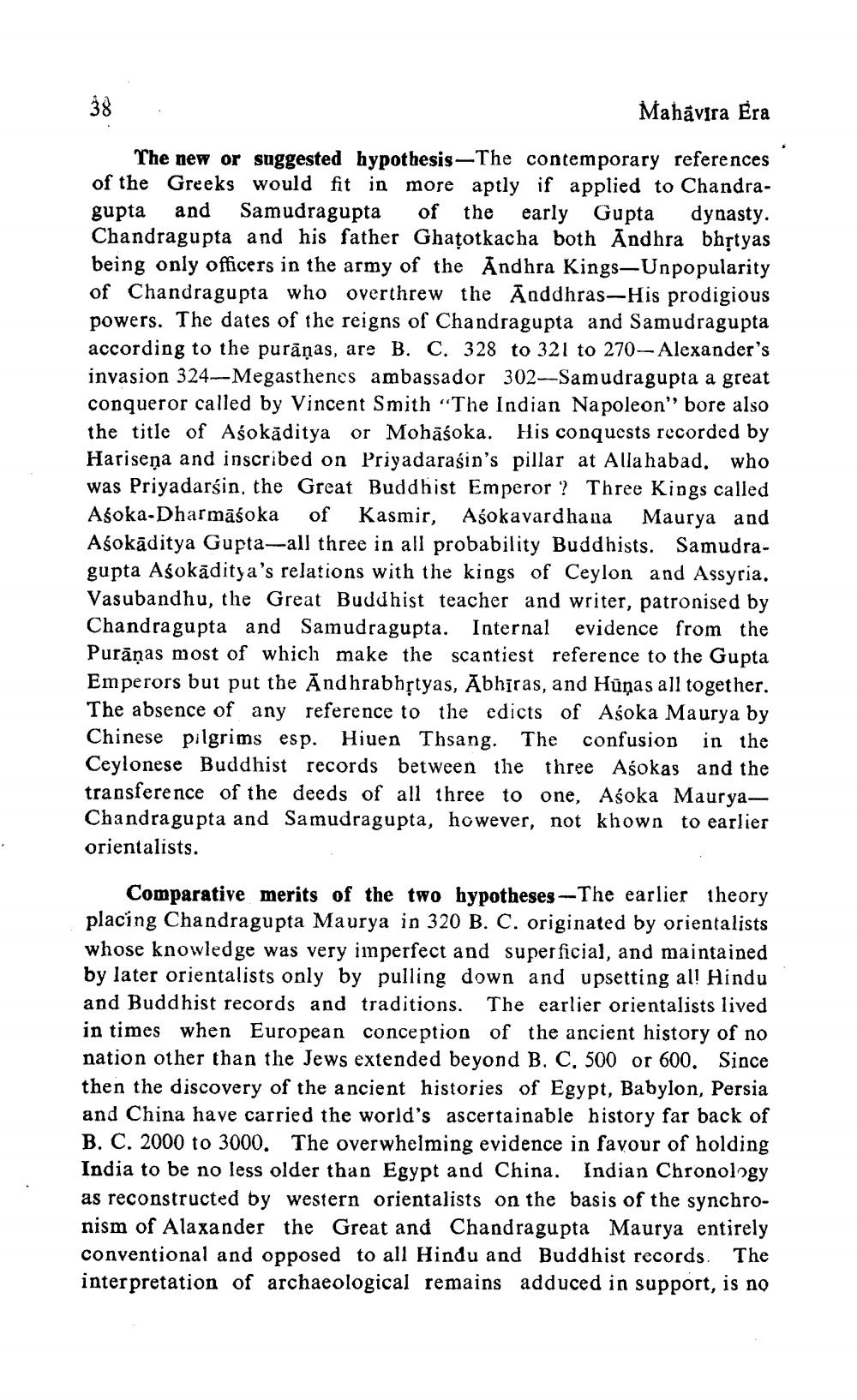________________
Mahavira Éra
The new or suggested hypothesis-The contemporary references of the Greeks would fit in more aptly if applied to Chandragupta and Samudragupta of the early Gupta dynasty, Chandragupta and his father Ghatotkacha both Andhra bhrtyas being only officers in the army of the Andhra Kings-Unpopularity of Chandragupta who overthrew the Ānddhras--His prodigious powers. The dates of the reigns of Chandragupta and Samudragupta according to the purāņas, are B. C. 328 to 321 to 270— Alexander's invasion 324--Megasthenes ambassador 302--Samudragupta a great conqueror called by Vincent Smith “The Indian Napoleon" bore also the title of Aśokāditya or Mohāśoka. His conquests recorded by Hariseņa and inscribed on Priyadarasin's pillar at Allahabad. who was Priyadarsin, the Great Buddhist Emperor ? Three Kings called Asoka-Dharmāśoka of Kasmir, Aśokavardhana Maurya and Ašokāditya Gupta---all three in all probability Buddhists. Samudragupta Asokāditya's relations with the kings of Ceylon and Assyria, Vasubandhu, the Great Buddhist teacher and writer, patronised by Chandragupta and Samudragupta. Internal evidence from the Purānas most of which make the scantiest reference to the Gupta Emperors but put the Āndhrabhstyas, Abhiras, and Hüņas all together. The absence of any reference to the edicts of Asoka Maurya by Chinese pilgrims esp. Hiuen Thsang. The confusion in the Ceylonese Buddhist records between the three Asokas and the transference of the deeds of all three to one, Asoka MauryaChandragupta and Samudragupta, however, not khown to earlier orientalists.
Comparative merits of the two hypotheses --The earlier theory placing Chandragupta Maurya in 320 B. C. originated by orientalists whose knowledge was very imperfect and superficial, and maintained by later orientalists only by pulling down and upsetting al! Hindu and Buddhist records and traditions. The earlier orientalists lived in times when European conception of the ancient history of no nation other than the Jews extended beyond B. C, 500 or 600. Since then the discovery of the ancient histories of Egypt, Babylon, Persia and China have carried the world's ascertainable history far back of B. C. 2000 to 3000. The overwhelming evidence in favour of holding India to be no less older than Egypt and China Indian Chronology as reconstructed by western orientalists on the basis of the synchronism of Alaxander the Great and Chandragupta Maurya entirely conventional and opposed to all Hindu and Buddhist records. The interpretation of archaeological remains adduced in support, is no




